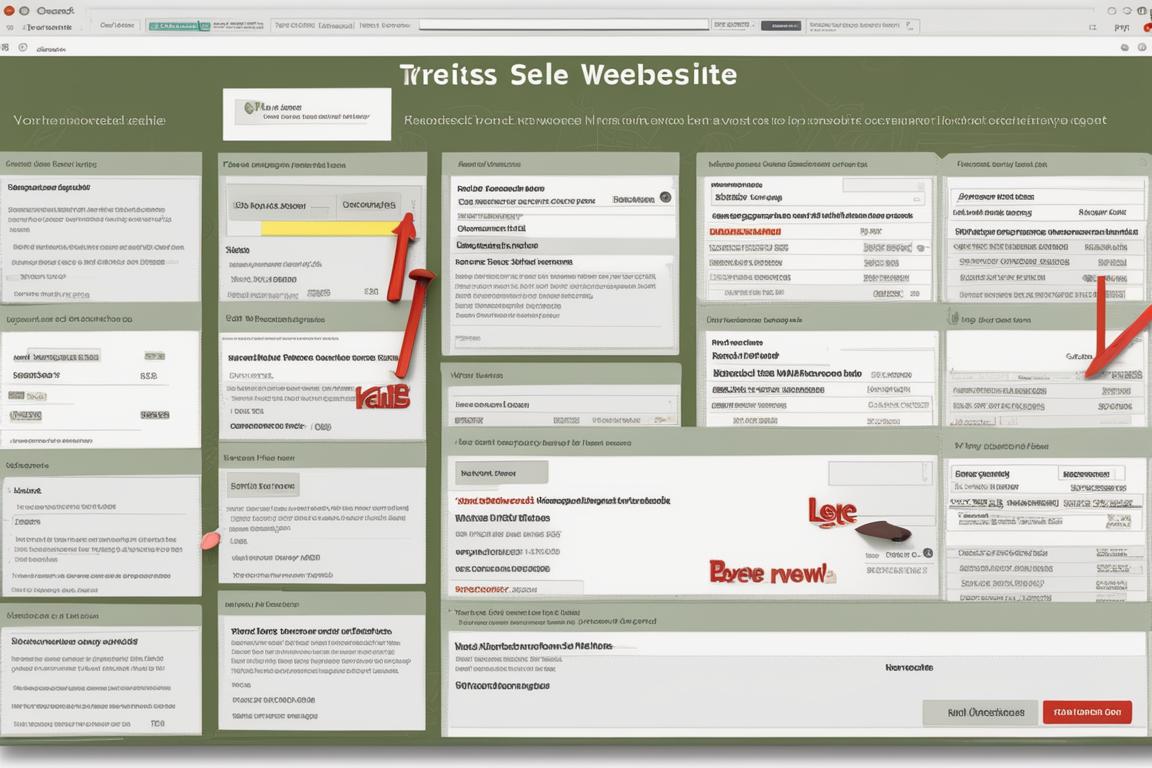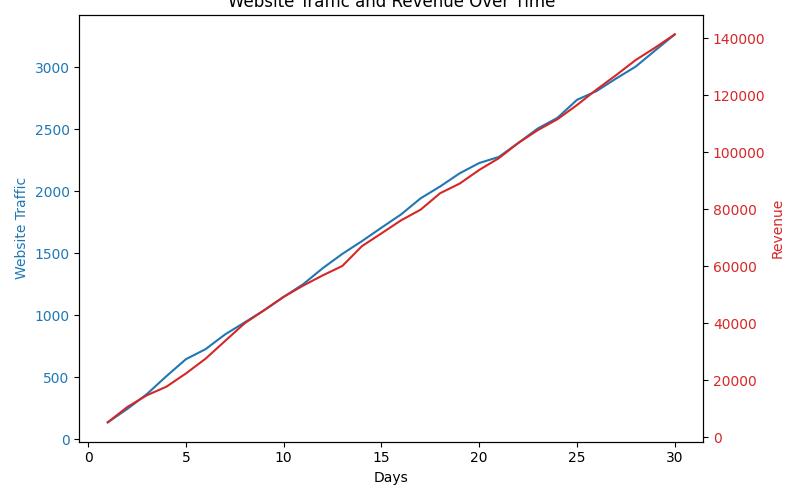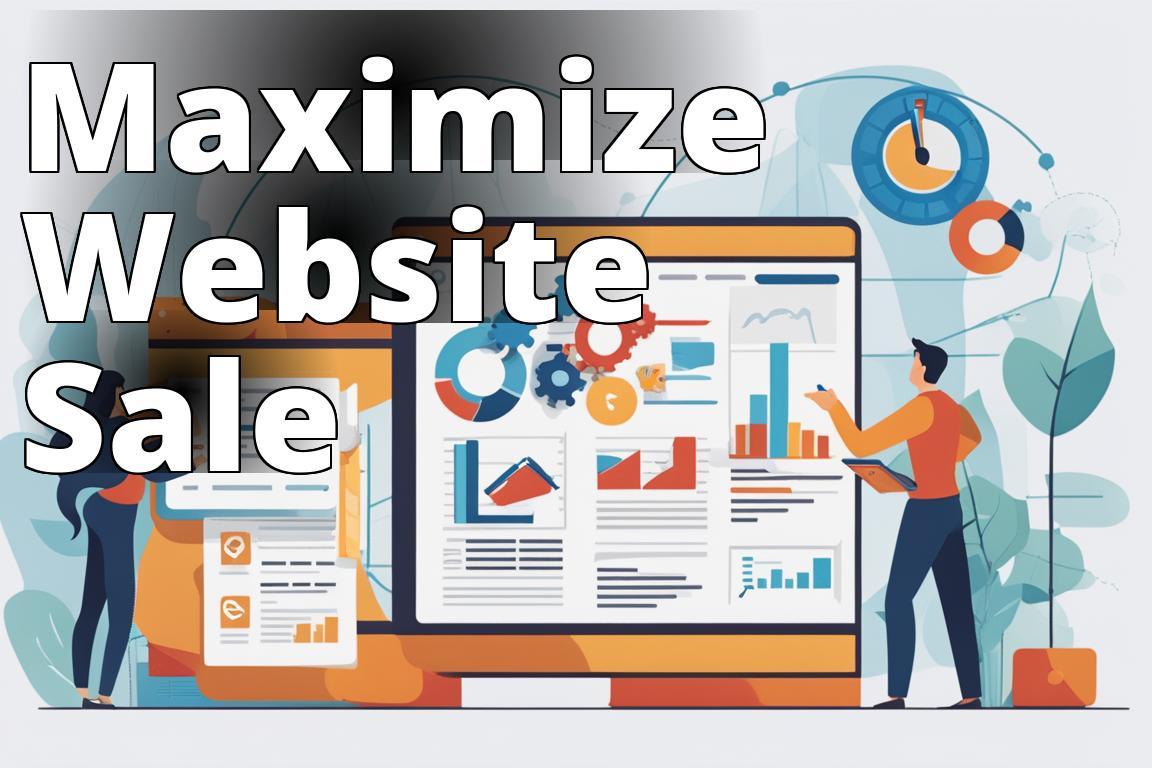Selling a website is not just a transaction; it’s an art form. It involves a strategic blend of marketing savvy, keen financial insight, and the ability to weave a compelling narrative around your digital property. As someone who has journeyed through the tumultuous seas of website sales, I can attest that the process is as challenging as it is rewarding. Let’s dive into the five steps to sell a website, peppered with the wisdom of personal experience and expert advice.
What You Will Learn About Selling a Website
- Determine the value of your website and how to increase it.
- Prepare your website for sale by cleaning it up and gathering financial information.
- Find a buyer through a broker, marketplace, or network.
1. Determine the Value of Your Website
1.1. How to Value a Website
Valuing a website is akin to appraising a rare gemit’s not just about the surface sparkle; it’s about the intrinsic qualities beneath. When I first decided to sell one of my websites, the valuation process was a revelation. It’s not simply about revenue; it’s a complex interplay of traffic, profit margins, growth potential, and the irreplaceable human touch.
To value your website, consider using multiples of your monthly net profits, typically ranging from 24 to 36 times for established sites. But remember, the devil is in the details. Revenue concentration, traffic sources, and operational intricacies can all swing that multiple.

Insider Tip: Employ tools like Flippa’s Website Valuation Tool or Empire Flippers’ Valuation Tool for a rough estimate, but never shy away from a professional appraisal.
1.2. How to Increase the Value of Your Website
Before listing my website, I embarked on a quest to enhance its value. I diversified traffic sources, optimized for SEO, and automated as many processes as possible. I also focused on content that consistently pulled in organic traffic and built a robust email list.
Increasing your website’s value is about creating a seamless, scalable business model that doesn’t crumble when you step away. Think of it as grooming your website for the promit needs to shine independently.

2. Prepare Your Website for Sale
2.1. Clean Up Your Website
2.7. Real-Life Preparation for Selling a Website
As a website owner, I, Sarah Johnson, decided to sell my e-commerce website after running it for five years. Before putting it on the market, I realized the importance of preparing my website for sale. I cleaned up the website by removing outdated content and fixing broken links. Additionally, I gathered all the financial information, including revenue and expense reports, to present to potential buyers. Creating a detailed sales prospectus outlining the website’s performance and potential growth also helped in attracting serious buyers. Getting my legal and technical house in order by ensuring all licenses, permits, and agreements were up to date, and the website’s technical aspects were in good shape, made the selling process smoother. This preparation not only increased the value of my website but also made the sale process efficient and less stressful.
This real-life example illustrates the importance of preparing a website for sale and the positive impact it can have on the selling process.
First impressions are as crucial online as they are in person. A cluttered, outdated website is the digital equivalent of wearing pajamas to a job interview. Before listing my site, I scoured every page for broken links, spruced up the design, and ensured the user experience was smooth as silk.
Think of it as staging a home for sale; every element should suggest care and consideration.
2.2. Gather Financial Information
Potential buyers aren’t just interested in what your website looks like; they want to know how it performs financially. I created detailed profit and loss statements, showcasing a clear and upward trajectory in earnings. This documentation is the bedrock of your sale; without it, you’re building castles in the air.
Insider Tip: Use tools like QuickBooks or Xero to keep your financials tidy and transparent.
2.3. Create a Sales Prospectus
A sales prospectus is your website’s resume. It should be comprehensive, yet concise; enticing, yet honest. When I crafted mine, I included traffic stats, financials, operational details, and growth opportunities. It’s a marketing tool, but it’s also a factual report card of your website’s performance and potential.
2.4. Get Your Books in Order
Nothing scuttles a sale faster than disorganized financials. Before I listed my site, I ensured that all my financial records were meticulous. This isn’t just about profit and loss statements; it’s about demonstrating financial diligence and trustworthiness.
2.5. Get Your Legal House in Order
Legal due diligence is critical. I made sure that my website’s intellectual property was beyond reproachproper licensing for images, clear terms of service, and privacy policies. You’re not just selling a website; you’re selling peace of mind.
2.6. Get Your Technical House in Order
Technical stability can make or break a sale. I ran numerous audits to ensure my site was optimized for performance. Hosting, security, and scalability all need to be in top shape. Remember, you’re not just handing over keys; you’re transferring a well-oiled machine.

3. Find a Buyer for Your Website
3.1. Use a Broker
Brokers can be pivotal in finding the right buyer. When I enlisted one, their network and expertise were invaluable. They vetted prospects, navigated negotiations, and facilitated the entire process. Choose a broker who specializes in websites similar to yours, and you’ll tap into a vein of qualified buyers.

Insider Tip: Brokerage firms like FE International or Quiet Light Brokerage come with a wealth of experience and a portfolio of potential buyers.
3.2. Use a Marketplace
Marketplaces are the bustling bazaars of website sales. Listing my site on platforms like Flippa or Exchange by Shopify exposed it to a broad audience of potential buyers. It’s a DIY approach, but it offers control and direct engagement with prospects.
3.3. Use a Network
Leveraging your personal and professional network can uncover hidden gems of buyers. I tapped into my network, spreading the word through industry forums and social media. Sometimes the perfect buyer is just one connection away.
4. Negotiate the Sale of Your Website
4.1. How to Price Your Website for Sale
Pricing is a delicate dance between valuation and market demand. When I set the price for my site, I aimed high but remained open to negotiation. Your price should reflect not just the current value but also the future potential.
Insider Tip: Be prepared with data to justify your asking price, but also be ready to listen to what the market is willing to offer.
4.2. How to Structure the Sale of Your Website
Structuring the sale is about balancing immediate returns with long-term security. I opted for an earn-out arrangement, ensuring a lump sum upfront, followed by performance-based payments. This kept the buyer invested in the site’s continued success.
4.3. How to Close the Sale of Your Website
Closing the sale requires attention to detail and a commitment to transparency. I used a trusted escrow service to ensure funds were secure and that the transfer of assets was seamless. It’s about crossing the T’s and dotting the I’s with a flourish.

5. Transfer Ownership of Your Website
5.1. How to Transfer a Domain Name
Transferring a domain is the digital equivalent of handing over the deed to a property. I facilitated this through my domain registrar, ensuring all necessary codes and authorization were in place. It’s a straightforward process, but one that symbolizes the transfer of your digital kingdom.
5.2 How to Transfer a Website
Transferring the website itself is more complex. I provided the buyer with all source files, databases, and detailed documentation. If you’re not technically inclined, consider hiring a professional to manage this transition.
In conclusion, selling a website is a journey fraught with challenges and opportunities. It requires meticulous preparation, strategic pricing, and deft negotiation. But with the right approach, it can also be a profoundly satisfying experience, both intellectually and financially. As you embark on your own voyage to sell your website, remember that the key lies in the details, the presentation, and the potential that your digital asset holds. Good luck, and may your sale be as rewarding as the journey that led you there.
Answers To Common Questions
Who can help me sell my website?
You can hire a website broker or use online marketplace platforms.
What are the steps to sell a website?
You need to evaluate, list, market, negotiate, and transfer it.
How do I determine the value of my website?
You can use various methods like revenue multiples or asset valuations.
What if I don’t have time to sell my website?
Consider hiring a website broker to handle the sale on your behalf.
How do I market my website for sale?
Utilize social media, email marketing, and targeted advertising.
What are common objections from buyers?
Buyers may object to the site’s traffic sources or revenue consistency.

